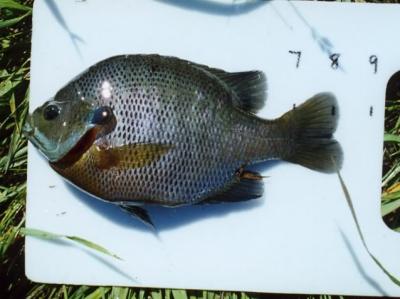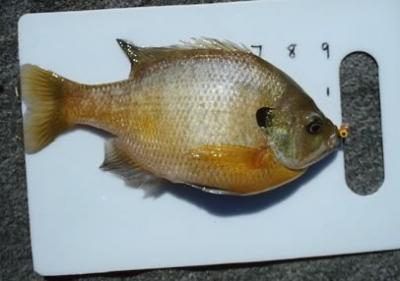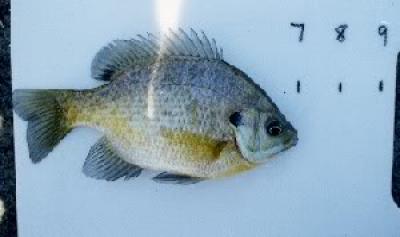Good morning,
I have attached photos of bluegills to help everybody know the difference and which ones to keep and let go.
A mature male is the easiest to figure out. That is picture number 1. This fish has a large ear flap or ear tab, black in color and extended posteriorly (tailward). Vivid coloration and burgundy colors on breast. Lots of black tips on scales. Males have the black tips on scales. Very important to let these go!!
Picture 2: Here’s a mature female bluegill. It’s a large mature fish. Much shorter ear tab, yellowy colored breast. No black spots on side scales. Also important to let go!!
Picture 3: Now here’s where it gets a little tricky. This is a smaller fish but is still a mature female with eggs. Still has a short ear tab and yellow coloration on breast. This is one to keep.
Picture 4: But this is a mature, smaller male bluegill that may be acting as a “sneaker” or “cuckholder”. The coloration is much more drab, the ear tab isn’t as big, but he can’t quite hide the slightly longer ear tab.
He is using the muted color and smaller stature to be able to hang around Mr. Big Boy’s nest without being attacked. When the female moves in to lay the eggs he sneaks out of the weeds and “provides a little genetic information”. These are the ones we need to be keeping!! They are the fish that spread their smaller genetics.
I will keep gills as small as 6.75 inches up to 8 inches, but will release those mature fish.
My goal of this topic is to educate fellow fisherman. Even the most avid fisherman, don’t know this info. I am hoping that we can spread the word and educate others.
No show I have watched goes into this kind of detail and I think they need too.
The big Gill gets very little respect in the fishing world, but we all long for those days when we used to catch dinner plate gills years ago.
Spread the word guys and lets make it an unwritten rule to do this, just like with other species. Lots of guys release walleyes over 18 inches and keep smaller ones to eat. Same principal here.
Adam







